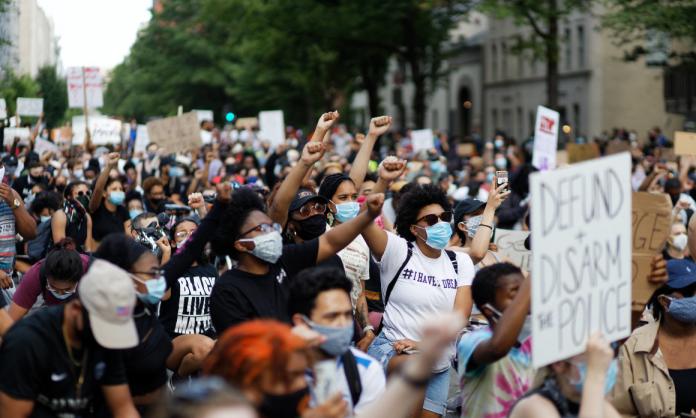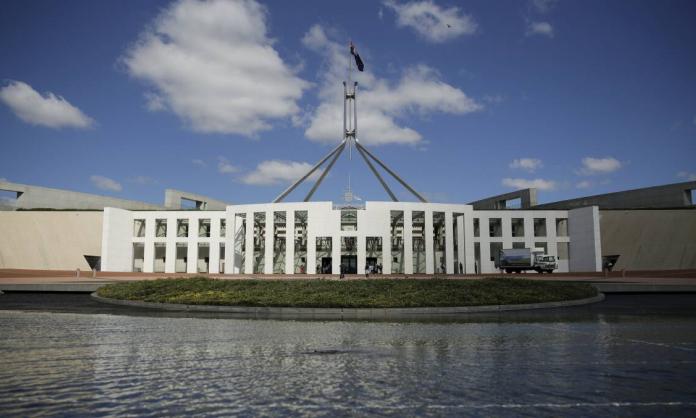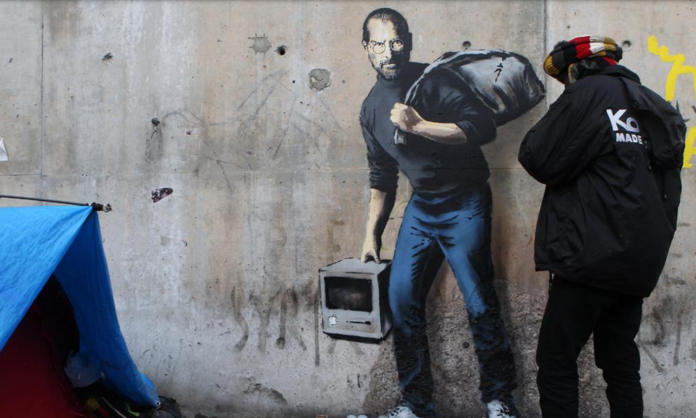Marx, in his groundbreaking economic treatise Capital, wrote that capitalism emerged “dripping from head to toe, from every pore, with blood and dirt”. He was observing the brutality of racism during capitalism’s ascendancy. The expansion of European empires exported capitalism around the world, bringing with it genocides and the dispossession and disenfranchisement of millions. Colonised peoples were cast as less than human, legitimately dominated by foreign powers and undeserving of dignity and rights. Elsewhere in Capital, Marx linked the economic and political conditions driving racism to the exploitation of the working class, one of the defining features of capitalism. He famously wrote of the US, “labour in white skin cannot emancipate itself where the black skin is branded”.
More than 150 years later, racism continues to be endemic to capitalism. It exists in every country, from Israeli apartheid in Palestine to fascist violence towards Muslims in India. It is an inevitable product of the political, economic and ideological imperatives of capitalism.
This is not the “common sense” view of racism. More commonly, racism is understood as bigoted attitudes and behaviours towards certain groups. But this raises the question of where such prejudices come from in the first place, why they are targeted at some groups and not others, and why they are more or less intense at different times. The history of racial inequality cannot be satisfactorily explained by the capricious nature of human prejudice. It rather reflects the changing needs and demands of the economic and political system through which people are forced to relate to each other.
For the same reason, racism cannot be reduced to a feeling of exclusion or subjective experience. The relationship of different groups to the social structures they exist in are objective and measurable, whatever varied effects they may have on the consciousness of individuals.
Aboriginal people, for example, at first constituted a barrier to capitalism’s expansion into Australia, and so were subject to genocide. More recently, their marginalisation from the mainstream Australian economy and business of profit making means their communities have tended to be underfunded and neglected, and they are periodically maligned by politicians looking to generate racist moral panics of various sorts. The impact of this is measurable: Aboriginal people are twice as likely to be unemployed, are less healthy and die nearly ten years younger on average than non-Aboriginal people, and are more likely to go to jail than university.
Working-class immigrants also experience a form of structural disadvantage. The poorest areas in major cities—such as Logan in Brisbane, Broadmeadows in Melbourne and the western suburbs of Sydney—are often where immigrant communities are concentrated. These suburbs have lower average incomes, poorly funded schools, worse public amenities like transport and hospitals, and a generally greater police presence than well-off neighbourhoods. For non-citizen or temporary visa workers, and refugees, hyper-exploitation in the workplace and the threat of deportation degrade people’s lives, entrenching poverty, squalid living conditions and insecurity. This is what underpins racist ideas and attitudes as well as the experience of racism—real social inequality.
The structures that give rise to racism are not accidental or a historical overhang. They are created, overseen and managed by a privileged minority who are concerned with maintaining their privilege and the system that creates it. This means ensuring there are people willing to work for low wages and accept poor living conditions, and who accept this inequality as legitimate or at least inevitable. Racial oppression is an important part of this. Bosses, politicians and landlords use laws, policies and practices that at times explicitly target, at others disproportionately affect, the racially oppressed. Immigration departments and the armed forces both consciously and instinctively uphold racist inequality. The media can generate prejudicial assumptions towards particular racial groups, wilfully or not.
One of the most obvious and consequential aspects of structural racism is in the workplace. In many countries, the lowest paid and most dangerous work is performed by immigrants, whether South Asian construction workers in Dubai or undocumented Latin American cleaners in the US. Newly arrived migrants everywhere (unless they are wealthy) are almost always concentrated in low-paid, poorly organised industries where bosses can take advantage of their precarious immigration status, unrecognised skills or lack of familiarity with the local language.
It is an open secret that Australian farms flout basic industrial laws. Talipope, a worker from Vanuatu, spoke to a parliamentary inquiry into the Pacific Islander Seasonal Workers Program in February 2022. Working on an Australian farm on a temporary visa, he had earned $100 a week, for 64 hours of work. His employer charged him rent to sleep four to a room with bed bugs and no air conditioning. Another worker told the committee, “The way we are made to work, through the heat of the sun or rain, without rest, we feel like we are being treated like slaves”.
Taking advantage of migrants in this way boosts profits. That’s why, in response to labour shortages on farms since the COVID-19 pandemic began, the federal government has proposed visa schemes targeting South Asian and Pacific Islander workers. Capitalists are always seeking to minimise their costs and maximise their earnings, and politicians are happy to help them.
Inequality in the workplace can undermine unity between workers. At times, the ruling class has consciously encouraged racism in order to undermine solidarity. In the 1970s, when workers were much more well organised and industrially militant than today, striking workers at the Ford factory in the Melbourne suburb of Broadmeadows famously had to contend with such tactics in order to win their demands. One of the tactics used by Ford management involved segregating the workforce according to language groups so as to create divisions and suspicion. Similar techniques were used by car manufacturers in the US.
Racism is divisive even when employers aren’t consciously encouraging it. The experience of racism can make racially oppressed workers feel alone and defensive about raising grievances. They can feel support is forthcoming only in their ethnic “community”, rather than from the workers’ movement. And it can make non-oppressed groups hostile to those who should be their allies. Their allegiance to the nation means identification with the economic and political interest of their rulers, frequently against co-workers. Racial and national identities are so coveted by bosses, politicians and right-wing ideologues precisely because of this potential to obscure or eclipse class identification.
Politicians frequently use this to their advantage. Just think of the various racialised moral panics about terrorism, or crime. This bluster both diverts attention away from politicians’ failures in other areas, whether health or other social services, and creates a scapegoat for the stress caused by those failures.
This means that racism not only injures workers who experience it, but also those who don’t. The undermining of collective consciousness creates barriers to the advancement of workers as a class both in the workplace and in society as a whole.
Another important aspect of racism that makes it indispensable to capitalism is its relationship to imperialism, nationalism and war. Economic competition in capitalism regularly spills over into tensions between states—whether in the form of diplomatic spats or military conflict. This inevitably involves the demonisation of those being attacked or invaded, or who are economic competitors, in order to help secure stronger domestic support for hostilities.
This helps explain why the targets of racism tend to shift and change over time. Whereas some peoples experience ongoing oppression within particular capitalist states—such as Aboriginal people and Palestinians—for others it is more episodic. Indeed, some groups that historically experienced oppression may not even be thought of as a “race” today at all.
In the early period of colonisation, for example, the Australian authorities demonised the Irish as lazy, violent welfare cheats. Anti-Irish prejudice continued to be widespread until relatively recently, yet today it barely figures.
During World War II, the Australian state imprisoned more than 12,000 people deemed to be “enemy aliens”—largely German and Japanese, but also Italians, Hungarians and Russians: people who today are rarely the target of organised racism.
By contrast, people who just a few decades ago attracted very little negative attention, like Muslims, can suddenly by vilified and persecuted in the name of fighting terror and to justify military adventures in the Middle East.
The interlocked twists and turns of racism and imperialism demonstrate the artificial and constructed nature of race. An “enemy alien” in one context is an unremarkable citizen in another.
The beneficiaries of all this are not white people or those who otherwise escape racist victimisation. It’s the ruling minority for whom it makes economic and political sense: those who make profits from the oppression of different groups and who instinctively recognise that the system functions best when there are divisions and social “problems” that governments purport to solve.
Yet the idea of “white privilege” has many adherents. Not having experienced racism, according to this view, makes someone complicit in, if not responsible for, the system of racial oppression.
One problem with this is that many groups that today would be considered white, like the Irish, Greeks, Jews, Germans, Italians and Eastern Europeans, have all at times experienced racism in Australia. And in many countries racial divisions are between different groups of colour, such as Muslims in India who face lynchings and pogroms from Hindu nationalists. Indeed, some of the most horrendous acts of racism in history have occurred between and among people who look very similar to each other: such as the persecution of Jews in the Holocaust, or Bosnians murdered by the Serbian government in the Srebrenica massacre.
Race, then, is social rather than biological. Racial identity is made meaningful by society and the differential position of particular groups within it. It is not a natural phenomenon stemming from biological factors such as skin or hair colour. In each country, the ruling class—whether black-, white- or brown-skinned—creates and enforces racial division and oppression for its own purposes.
Another problem with seeing racism as an undifferentiated battle between those who experience oppression and those who don’t is that it tends to imply that workers are as culpable as those with real power. A white worker and a white boss, according to this logic, both have a stake in keeping other groups down. Of course, working-class people can be racist, agree with racist government actions or even participate in racist political movements. This is inevitable, because, as Marx argued in The German Ideology, “the ruling ideas of every epoch are the ideas of the ruling class”. But working-class people aren’t responsible for the structures and policies that allow racism to exist in the first place. Workers don’t determine visa conditions, wages or the cost of rent. Neither do workers command armed forces to imprison refugees attempting to reach Australia by boat or choose to lock up Aboriginal kids for petty crime. These decisions are made or shaped by those with real power—politicians, corporate bosses, media moguls—whose overriding concern is generating profit and protecting the rule of the wealthy.
And workers don’t have anything to gain from racism. The opposite is true: when workers take up racist attitudes, they further entrench their own economic disadvantage vis-à-vis the real power in society. The bodies responsible for racism are also responsible for the oppression of the whole working class. The employers lobbying for less regulation of industry to better exploit immigrant workers oppose the union movement as a whole, rejecting basic attempts by workers to push back the profit motive and improve their lives. The politicians who demonise immigration as the cause of high rents underfund public amenities, subjecting workers to overcrowded schools and hospitals. The forces barracking for more weapons are carelessly disinterested in stopping climate destruction, which threatens billions of workers.
Racism is among the myriad tools capitalism relies on to keep workers ground down, distracted and failing to see the class reality at the core of the system. Workers can improve their own lives only by casting off the divisions spurred by racism and all such oppression. Likewise, racism can be ended only when the economic structures that uphold it, along with all other forms of oppression, are destroyed and replaced by a system geared around meeting people’s needs, not generating profit. This was the political conclusion of Marx’s Capital, and it remains as relevant today as when it was written.










